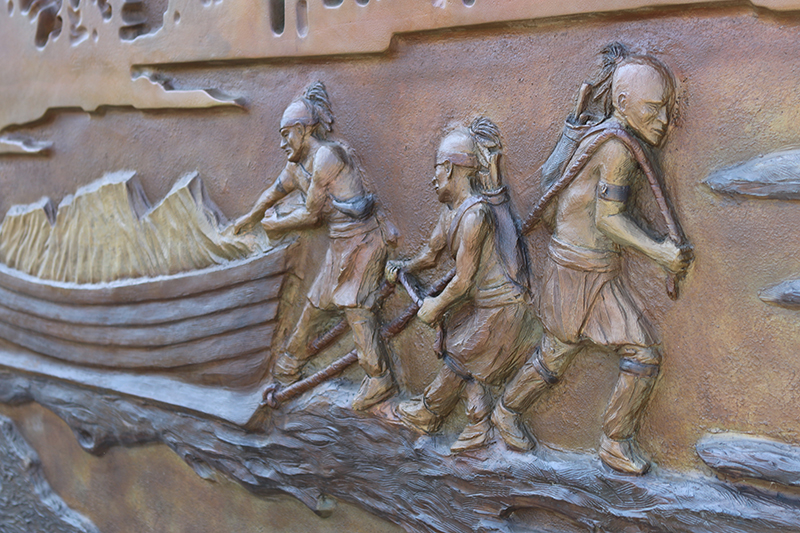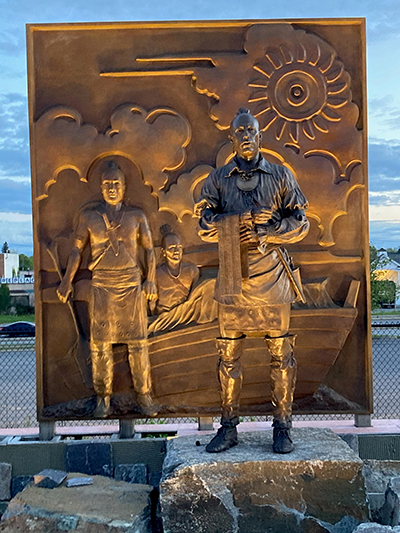THE ONEIDA CARRYING PLACE
PUBLIC DISPLAY
In May of 2021, the Oneida Indian Nation, together with officials from Oneida County and the City of Rome, unveiled a new bronze sculpture and public artwork that commemorates the historic Oneida Carrying Place, a vital mode of transportation, trade and commerce before and during the Revolutionary War.
Measuring an impressive 7 feet by 27 feet, the display features three bronze panels behind a life-size bronze sculpture of an Oneida Warrior.
“Recognizing the contributions and sacrifices of our ancestors is among the most important priorities for the Oneida Indian Nation,” said Nation Representative Ray Halbritter during remarks given during the dedication of this public artwork display. “As we continue to make strides in creating a truly inclusive community, this beautiful tribute will remind us to never forget our collective past and help visitors learn about the role this region played in the founding of the country.”
The Oneida Carrying Place played an integral role in the success of the Americans in the Revolutionary War. While it was used by the Haudenosaunee well before European settlers arrived, the path became a critical strategic area during the American Revolution when the Oneidas helped the American colonists defend nearby Fort Stanwix from a British siege. The attempted siege failed and the Americans, with their Oneida allies, helped change the momentum of the war.
The monument panels are made of copper, this was done specifically to pay tribute to Rome’s distinction as the “Copper City.”
One panel represents the Clans of the Oneida People – Turtle, Wolf and Bear. Another depicts Oneida men physically carrying a boat to shore. The Oneida Carrying Place served as a land bridge between the Mohawk River to the east, and Wood Creek to the west.
The center panel includes depictions of Oneida warriors and of an Oneida leader. The Oneida leader standing in front of the panel, on the stone, is holding a two-row wampum. This belt symbolizes the agreement and conditions under which the Haudenosaunee welcomed the newcomers to this land.
The sculpture is located at 301 W. Dominick Street in the City of Rome, on a section of the Oneida Carrying Place which leads to Fort Stanwix. This location is to honor the Oneida people for their sacrifices that helped define the history of the United States.










